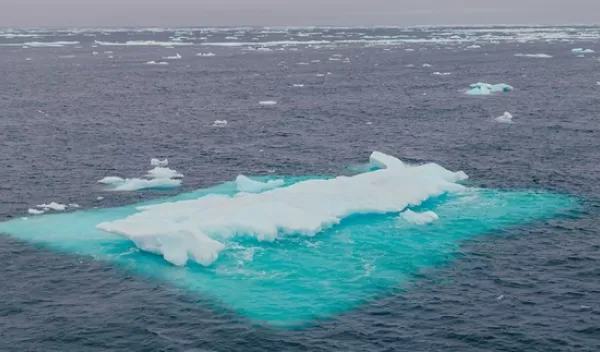
Researchers find new reason why Arctic is warming so fast
The Arctic has experienced the warming effects of global climate change faster than any other region on the planet. Scientists at the Scripps Institution of Oceanography have developed a new theory aided by computer simulations and observations that helps explain why this occurs.
A team led by Scripps researcher Emma Beer observed the changes taking place in the Arctic Ocean, which is largely covered by sea ice for most of the year. There, an unusual situation exists where the water is warm at depth and cold near the surface. The deeper waters are fed by the relatively warm Pacific and Atlantic oceans, whereas the near-surface waters are in contact with sea ice and remain close to the freezing point. Heat flows upward from the warmer water to the colder water.
The scientists found that the deeper water is getting still warmer as a result of climate change, but the near-surface water below the sea ice remains close to the freezing point. The increasing difference in temperature leads to a greater upward flow of heat. Beer, Scripps climate scientist Ian Eisenman, and researcher Till Wagner of the University of North Carolina estimate that this phenomenon is responsible for about 20% of the amplification of global warming that occurs in the Arctic.
"While previous work has found mechanisms related to the surface and the atmosphere that cause Arctic amplification, our finding is that there is also a fundamental reason why the ocean causes polar amplification when the polar region is covered with sea ice," Eisenman said of the National Science Foundation-supported study. The results are published in the journal Geophysical Research Letters.
